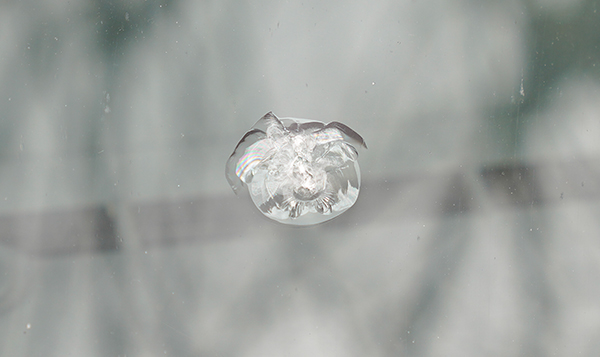
When you notice damage on your windshield, it’s not always easy to tell whether it’s a stone chip or a crack. Understanding the difference can help you make the right decision about repair or replacement and avoid more serious issues down the road.
What Is a Stone Chip?
A stone chip, sometimes called a rock chip, happens when a small piece of debris hits your windshield and removes a tiny portion of glass. This impact leaves a pit or divot that may have short cracks radiating outward. Typically, chips are less than the size of a loonie and can often be repaired if addressed early.
Chips usually stay localized at first, but if left untreated, they can expand into longer cracks. According to NHTSA safety standards, even a small chip can compromise the windshield’s performance in an impact if it spreads.
What Is a Crack?
A crack is a distinct line that extends across the glass. Cracks can start at the edge of the windshield or form from an untreated chip. Unlike a chip, a crack can grow rapidly with changes in temperature, vibration, or vehicle movement.
There are several types of cracks:
- Edge Crack: Starts within 2 inches of the edge and usually grows horizontally.
- Floater Crack: Begins away from the edges, often near the center.
- Stress Crack: Develops without impact, usually from sudden temperature shifts.
Transport Canada notes that cracks longer than 6 inches often require immediate replacement to maintain driver visibility and safety. Learn more in their defect investigations guide.
How Each Spreads
Stone chips and cracks behave differently over time. A chip may remain stable for weeks, or it may turn into a crack almost overnight, especially in extreme temperatures. A crack, once formed, will typically keep growing with vibration and stress.
That’s why it’s critical to inspect any damage right away and avoid slamming doors or using hot defrosters, which can worsen the problem.
Repairability of Chips and Cracks
Most chips smaller than a loonie can be repaired quickly and affordably if you act promptly. Modern resin injections restore structural integrity and prevent spreading.
Cracks are harder to manage. In general:
- Cracks under 6 inches may be repairable depending on location.
- Edge cracks and long cracks often require full windshield replacement.
- Damage in the driver’s line of sight may not be repairable because it can leave minor distortions.
Our team at Speers Auto Glass can assess your situation and recommend the best option. We offer both windshield repair and windshield replacement services to suit your needs.
What to Do Next
If you discover a chip or crack:
- Take a clear photo to track any spreading.
- Avoid rapid heating or cooling.
- Keep your vehicle parked in shade when possible.
- Schedule an inspection quickly.
The sooner you act, the better your chances of a cost-effective repair.
Contact Speers Auto Glass today for a free damage assessment and keep your windshield in top shape.
Related Posts in This Series
- Types of Windshield Cracks and Chips Explained
- How Fast Can a Crack Spread in Your Windshield?
- The Dangers of Ignoring Auto Glass Damage
